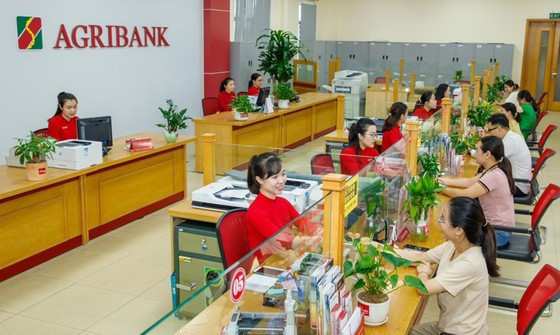 Commercial banks in Vietnam have been actively offering loans for green projects. (Photo: sggp.org.vn)
Commercial banks in Vietnam have been actively offering loans for green projects. (Photo: sggp.org.vn)Hanoi (VNA) – Commercial banks in Vietnamhave been actively offering loans for green projects and expanding green creditthrough mobilising capital from international credit institutions.
Green credit has been given more and more attention,especially after 2012 when the Government approved the National Strategy onGreen Growth, and green creditand green banking has been made a major orientation in the banking sector's development strategy to 2025 with a vision to 2030.
VietCapital Bank offered a preferential credit packageworth 300 billion VND (nearly 12.46 million USD) to support businessesconverting to green production models.
The bank has also added 500 billionVND to a green credit package with a preferential interest rate of 8.9% peryear to lend to individual and business customers engaging in farming activities thatapply technology or models following VietGAP, GlobalGAP standards and organic farming.
Recently, Vietcombank has also granted 4 trillion VND in both medium and long-term credit to PetroVietnam Electricity Corporation tofinance the Nhon Trach 3 and 4 Power Plant projects in Nhon Trach district,Dong Nai province.
In March, Vietcombank and the Japan Bank forInternational Cooperation (JBIC) signed a cooperation agreement worth 300million USD, adding capital to support renewable energy projects.
Nam A Bank also eyed providing green credit to projectsof electrical vehicles, renewable energy, and clean energy. It has just signeda cooperation agreement with the Global Climate Cooperation Fund (GCPF) todeploy a green credit programme that provides preferential financing forenvironmentally-friendly consumption and production. Currently, Nam A Bank'sgreen credit balance is up to hundreds of billions of VND.
Since 2017, the Military Commercial Joint Stock Bank (MB)has been lending to renewable energy projects. Currently, about 8%-10% of the bank's total outstanding loans are for green credit areas. MB aims toincrease the proportion of green credit and credit for technologytransformation to 15% of total outstanding loans by 2026.
Meanwhile, the Joint Stock Commercial Bank for Investmentand Development of Vietnam (BIDV)'s green credit outstanding balance at the endof 2022 was at 63.8 trillion VND, accounting for 4.3% of total bank loans and13% of total green loans in Vietnam. BIDV also committed to expanding the loanportfolio for green and sustainable fields by 2025, which is expected to reach3 billion USD, accounting for about 5% of BIDV's total outstanding loans.
To facilitate the growth of green credit, the State Bankof Vietnam (SBV) issued an action plan to implement the National Strategy onGreen Growth for the period 2021-2030 and a project on tasks and solutions toimplement the results of the COP26 conference.
Currently, 39 credit institutions are providing greencapital with a credit growth rate of more than 25% per year, higher than theaverage credit growth rate of the general economy.
However, the proportion of green credit is still verymodest with outstanding green credit debt, at more than 500.5 trillion VND, accounting for just 4.32% of the total outstanding debt of the entire economy.
Explaining the modest amount of green credit, a representative ofthe Department of Credit for Economic Sectors under the SBV said that the mainreason is that there are no national regulations on criteria and lists of greenprojects for industries and fields as a basis for credit institutions.
The supervision and risk management when granting greencredit still has problems due to the lack of regulations and criteria forevaluating projects' impacts on the environment.
In addition, investing in green industries and fields,especially in renewable energy and green buildings, often requires a longpayback period, and large investment costs, which makes it difficult for banks to balance capital and ensure the ratio of short-term capital for medium andlong-term loans as prescribed.
According to experts, if Vietnam has a standardisedmanagement framework, and a clearer definition of green projects, internationalbanks can support the Vietnamese Government in promoting the green economy./.






























